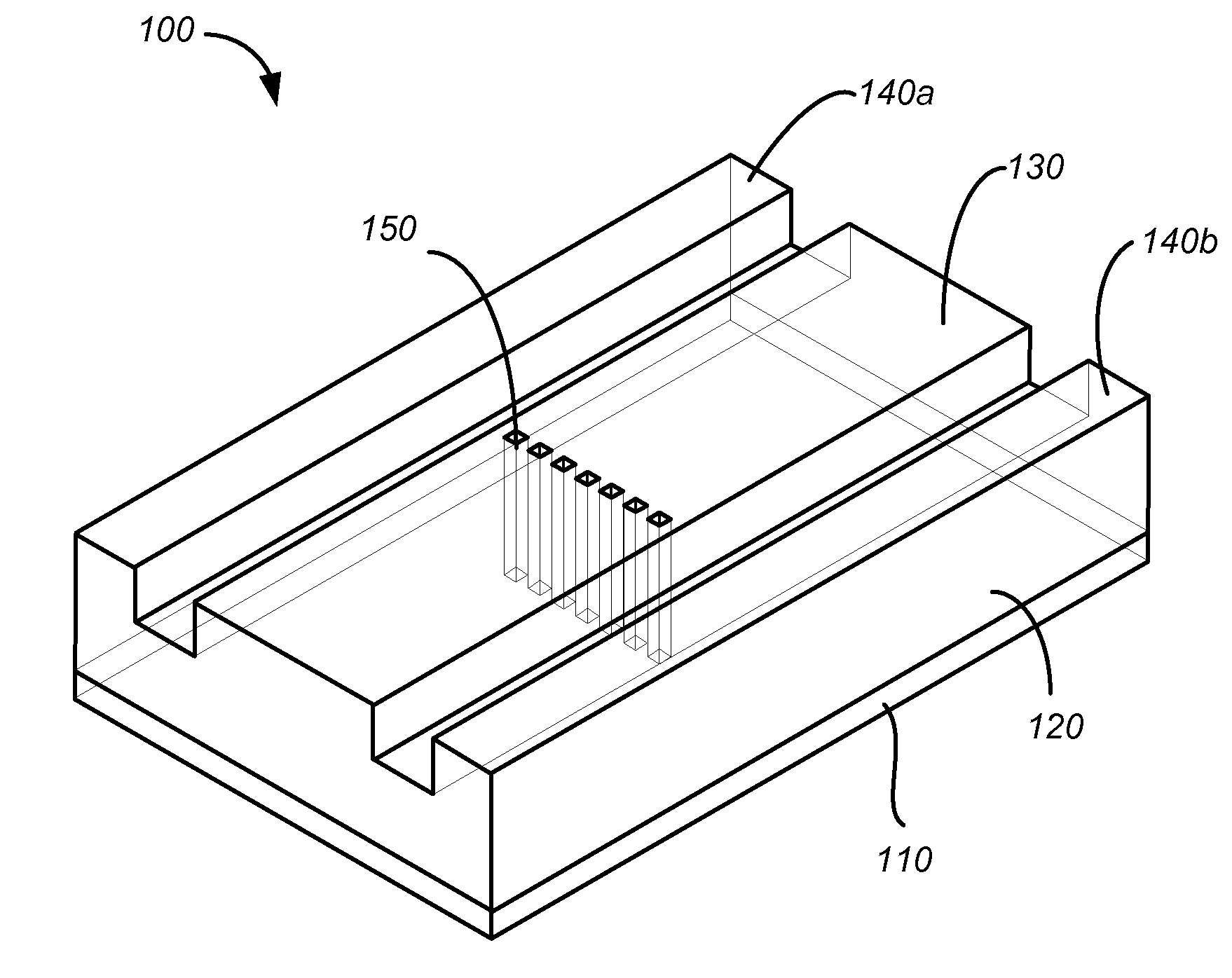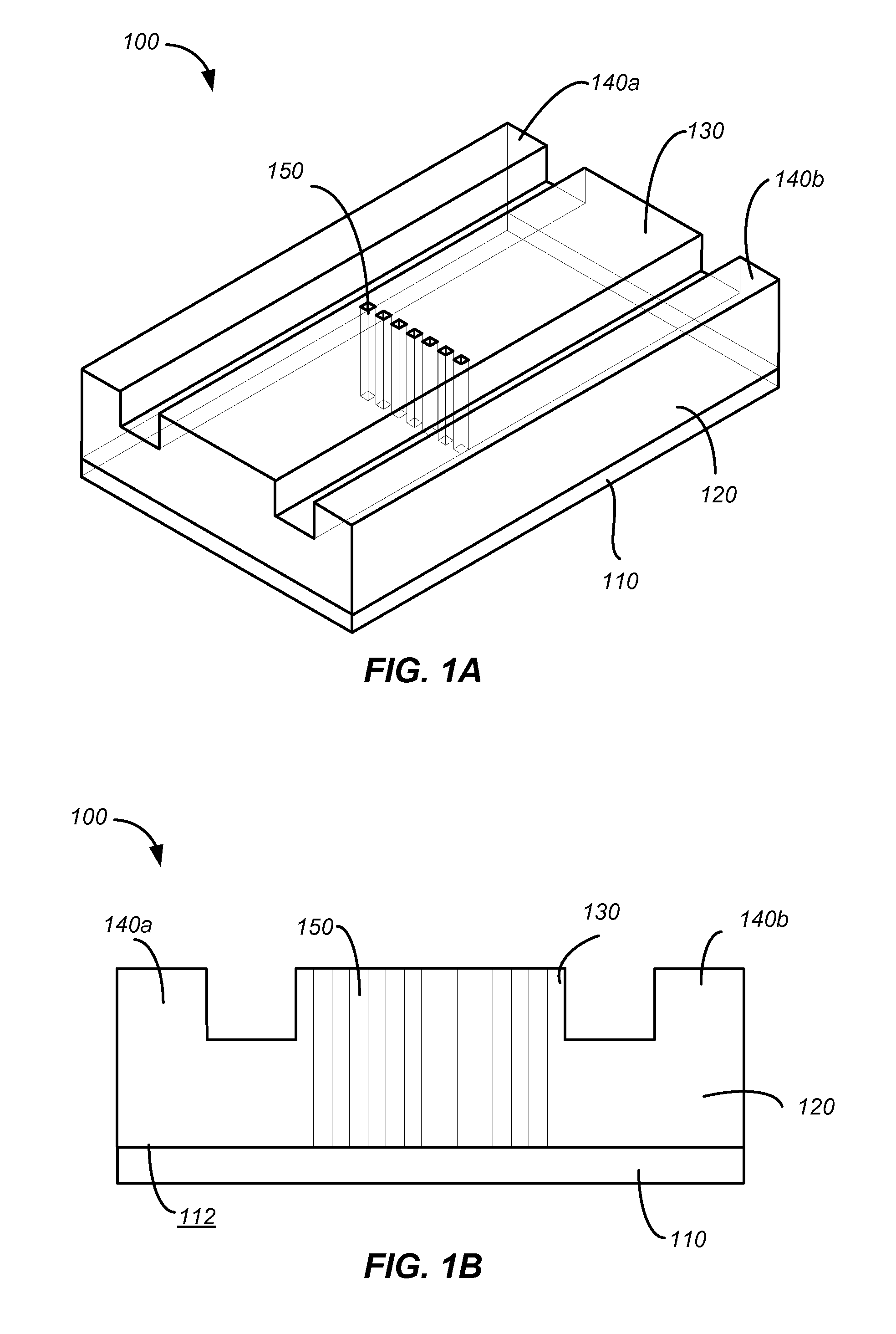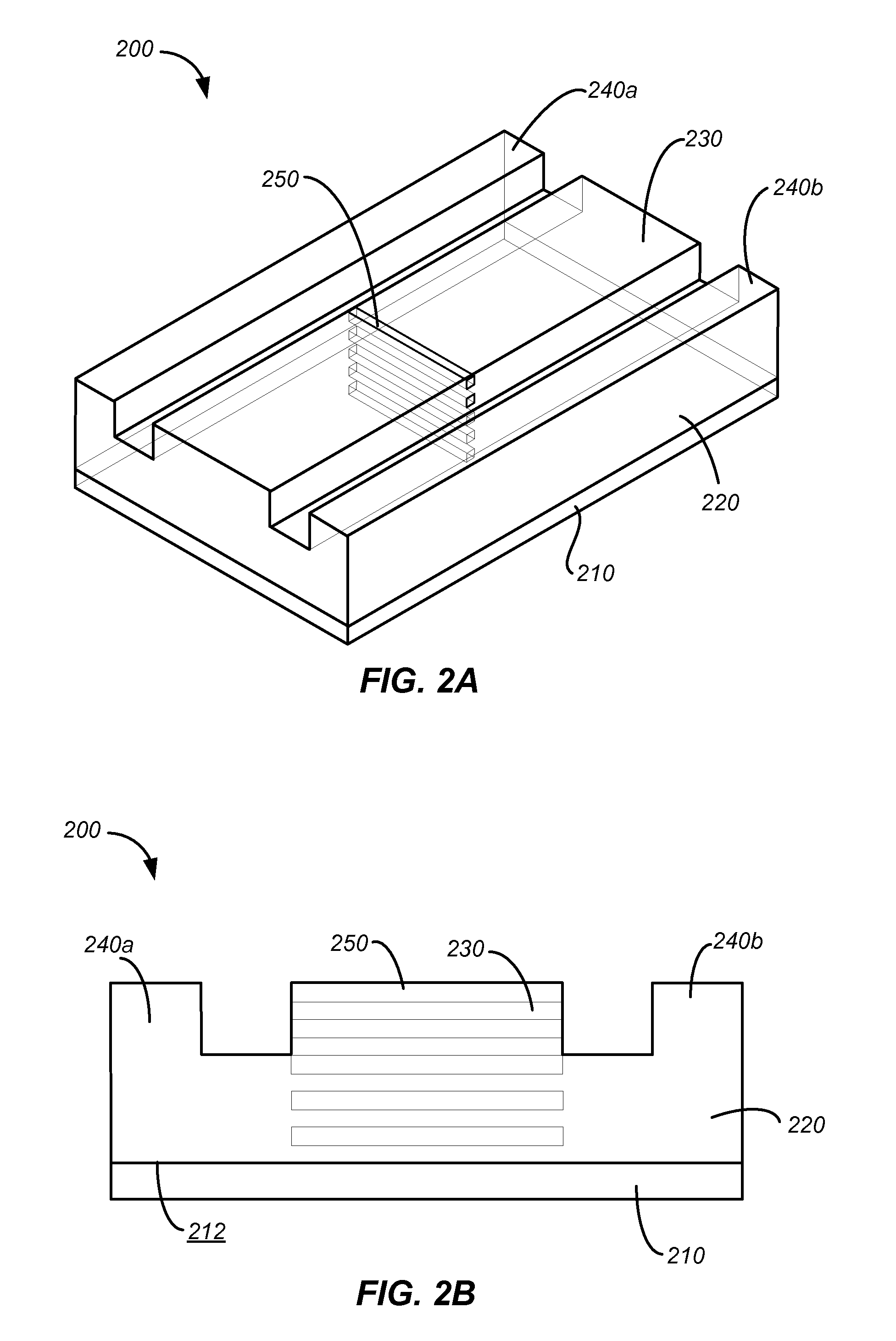Systems and methods for photonic polarization-separating apparatuses for optical network applications
a technology of optical network and separation apparatus, applied in the field of system and method of photonic polarization separation apparatus for optical network application, can solve the problems of inconvenient use of silicon for light emission or optical amplification, preventing the fabrication of monolithically integrated opto-electronic integrated circuits on silicon, and limiting the integration of advanced electrical functions on silicon to niche, high-performance applications
- Summary
- Abstract
- Description
- Claims
- Application Information
AI Technical Summary
Benefits of technology
Problems solved by technology
Method used
Image
Examples
Embodiment Construction
[0037]Photonic polarization beam splitters integrated on silicon are preferable for the commercial deployment of optoelectronic integrated circuits. Silicon is a preferable material for electronic integration. Silicon technology has advanced such that extremely complex electronic functions can be realized very inexpensively. Embodiments of the present invention relate to systems and methods for integrated photonic polarization beam splitters.
[0038]FIGS. 1A and 1B are a perspective view and a cross-sectional view, respectively, of a simplified schematic diagram illustrating a waveguide polarizer 100 including an array of embedded structures 150 according to an embodiment of the invention. The waveguide polarizer 100 includes a substrate 110 having a surface 112, and a waveguide 120 coupled to the surface 112 of the substrate 110. The waveguide 120 includes a beam propagation portion 130, and two side portions 140a and 140b flanking the beam propagation portion 130. The waveguide pola...
PUM
 Login to View More
Login to View More Abstract
Description
Claims
Application Information
 Login to View More
Login to View More - R&D
- Intellectual Property
- Life Sciences
- Materials
- Tech Scout
- Unparalleled Data Quality
- Higher Quality Content
- 60% Fewer Hallucinations
Browse by: Latest US Patents, China's latest patents, Technical Efficacy Thesaurus, Application Domain, Technology Topic, Popular Technical Reports.
© 2025 PatSnap. All rights reserved.Legal|Privacy policy|Modern Slavery Act Transparency Statement|Sitemap|About US| Contact US: help@patsnap.com



